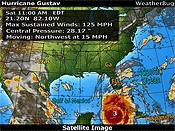California Common Core Implementation Costs
 Thursday, March 7, 2013 at 07:49PM
Thursday, March 7, 2013 at 07:49PM
California Common Core Implementation Costs
by Henry W. Burke
2.25.13
It will cost California $2.1 billion to implement the Common Core Standards (CCS). Where will California find $2.1 billion to implement the mediocre Common Core Standards?
I will call your attention to an excellent Pioneer Institute report, "National Cost of Aligning States and Localities to the Common Core Standards," dated February 2012 (PI report) and my report, "States' Taxpayers Cannot Afford Common Core Standards," by Henry W. Burke, dated 10.15.12 (Burke report). These are the links to the two reports:
http://www.pioneerinstitute.org/pdf/120222_CCSSICost.pdf
http://educationviews.org/states-taxpayers-cannot-afford-common-core-standards/
I also wrote a companion report applicable to the states that did not adopt the Common Core Standards, "Non-Common Core States Will Save Millions of Dollars," by Henry W. Burke, 10.18.12:
http://educationviews.org/non-common-core-states-will-save-millions-of-dollars/
California gave up very good state standards to adopt the inferior Common Core Standards. According to a 2010 Fordham Institute report that compared the state standards with the Common Core Standards, California had "Clearly Superior" English Language Arts (ELA) standards and "Too Close to Call" Mathematics standards.
I encourage you to realistically evaluate the costs versus the benefits for the State of California. I will focus only on the cost of implementing the Common Core Standards (CCS) versus the dollar awards received from the federal government. California received $104.2 million in competitive awards.
I thought I would offer a little insight into the CCS implementation costs. This explanation includes the Pioneer report figures and my assumptions. Obviously, I cannot speak for the Pioneer Institute nor its partners in the white paper, Accountability Works and Pacific Research Institute. These are strictly my thoughts, assumptions and calculations.
The Pioneer Institute report identified four cost categories for CCS implementation. The categories are: Testing, Professional Development, Textbooks, and Technology. Pioneer calculated the total CCS implementation cost over a 7-year time period.
The PI report included bar graphs (without dollar figures) for each state in Professional Development, Textbooks, and Technology. The Appendices to the PI report showed exact dollar figures for each state in only the Textbooks and Technology categories. This is the link to the Pioneer Institute Appendices:
http://www.accountabilityworks.org/photos/Appendices.Common_Core_Cost.AW.pdf
Consequently, I had to derive figures for Testing and Professional Development for each of the 46 states. My goal was to duplicate the Pioneer figures as closely as possible. My nationwide totals for the four categories agree quite closely with the Pioneer Institute report.
A. California CCS Loss
The State of California submitted a proposal to the U.S. Department of Education (USDOE) for Phase 1 and Phase 2 of the Race to the Top (RTTT) program and received a rank of No. 27 in Phase 1 and a rank of No. 16 in Phase 2 of that competition. The 12 "winning" states under Phase 1 and Phase 2 of RTTT received a total of $3.94 billion.
California was not awarded any funds under the Phase 1 and Phase 2 RTTT competition. California received $104.208 million from the federal government in competitive awards from subsequent competitions.
In the Burke Table 1, CCS Loss Per State, the CCS Total Cost for California is $2,188.494 million ($2.188 billion); and the federal competitive award total is $104.208 million. The difference is $2,084.286 million ($2.084 billion).
This means California will have to find $2.1 billion to pay for the implementation expense of CCS.
B. California CCS Cost
In the Burke Table 2, CCS Cost Per Student, we can see that California has a CCS Cost per Student of $350. This is somewhat below the average cost per student of $379 (average cost for the 46 CCS states).
Table 3, Total CCS Cost, lists the components making up the Total CCS Cost of $2,188.494 million for California. Testing cost is $185.690 million; Professional Development cost is $605.938 million; Textbook cost is $374.295 million; and Technology cost is $1,022.571 million.
In round numbers, California will spend $186 million on Testing, $606 million on Professional Development, $374 million on Textbooks, and $1,022 million on Technology. The Total CCS Cost for California will be $2,188 million ($2.188 billion).
Explanation of Figures
1. Testing -- Testing is a function of the number of students tested. Table 5 in my report shows the Total Nationwide Cost for the 46 CCS states. My Table 5 duplicates Pioneer Figure 2B (on page 2 of the PI report). Figure 2B shows a Total Testing Cost of $1,240,641,297.
Table 6 (Burke report) lists the number of students and teachers in each of the 46 states; the total for the 46 states is 41,805,062 students. I obtained all of the numbers in Table 6 from the Pioneer report Appendices (NCES: 2009 - 2010 School Year).
When I divided $1,240,641,297 by 41,805,062 students, I obtained a factor of $29.67681993 per student. This Testing cost factor was applied to each of the 46 states to get the Testing cost for each state. My Total Testing Cost of $1,240.641 million agrees with the Pioneer Figure 2B number.
California has a total student enrollment of 6,257,082 students (Table 6 of Burke report). When I multiplied 6,257,082 students by the $29.6768 factor per student, I obtained $185.690 million.
[6,257,082 students x $29.67681993 per student = $185,690,296]
2. Professional Development -- The purpose of Professional Development is to train the teachers on the new Common Core academic standards. Professional Development is a function of the number of teachers that must be trained. Pioneer used a Professional Development cost of $1,931 per teacher.
California has 313,795 teachers (Table 6 of Burke report). When I multiplied 313,795 teachers by $1,931 per teacher, I obtained $605.938 million.
[313,795 teachers x $1,931 per teacher = $605,938,145]
Incidentally, my calculations produced a Professional Development Cost for California of $605.938 million. The PI report bar graph showed the number $606 million for California. This verifies that my calculation assumptions and methodology are correct.
3. Textbooks -- I obtained the Textbook cost for California directly from the Pioneer Institute Appendix. The Table in the Appendix showed a Total Textbook Cost for California of $374,294,768 ($374.295 million).
The PI Appendix listed the following numbers for Textbooks and Instructional Materials:
California Textbook Cost
(Millions of Dollars)
|
Grade |
Textbook Cost ($ Millions) |
|
K |
33.723 |
|
1 |
31.389 |
|
2 |
25.128 |
|
3 |
25.595 |
|
4 |
23.452 |
|
5 |
23.169 |
|
6 |
26.892 |
|
Subtotal -- K - 6 |
189.348 |
|
|
|
|
7 |
27.811 |
|
8 |
28.589 |
|
9 |
32.661 |
|
Subtotal -- 7 - 9 |
89.061 |
|
|
|
|
10 |
31.323 |
|
11 |
33.190 |
|
12 |
31.373 |
|
Subtotal -- 10 - 12 |
95.886 |
|
|
|
|
Total -- K - 12 |
374.295 |
4. Technology -- I obtained the Technology cost for California directly from the Pioneer Appendix. The PI Appendix lists the Total Technology Cost for California as $1,022,570,559 ($1,022.571 million).
The PI Appendix provides the following information:
California Technology Cost
(Millions of Dollars)
|
Description |
Technology Cost ($ Millions) |
Total Technology Cost ($ Millions) |
|
One-Time Costs |
418.529 |
418.529 |
|
Year 1 Operations |
44.773 |
44.773 |
|
Years 2 - 7 Operations (Annual) |
93.21142 |
-- |
|
Total for 6 Years (Years 2 - 7) |
559.269 |
559.269 |
|
Total Technology Cost |
|
1,022.571 |
Please contact me if you would like copies of my two reports.
Henry W. Burke
E-mail: hwburke@cox.net










